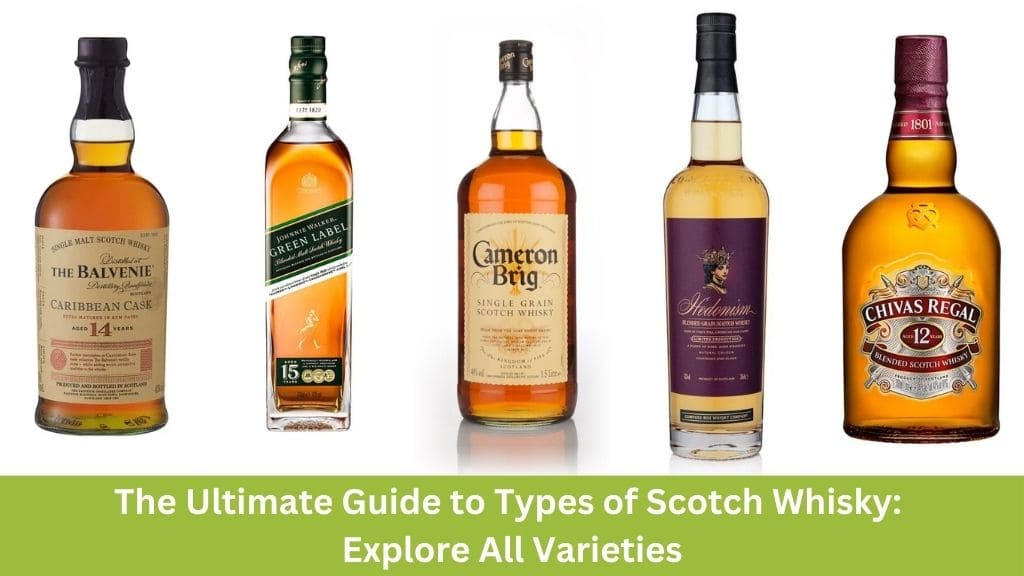Scotch whisky is not merely a beverage; it is an experience that embodies the rich heritage, tradition, and craftsmanship of Scotland. Whether you’re a seasoned connoisseur or a curious novice, understanding the different types of Scotch can enhance your appreciation for this storied spirit.
What is Scotch?

Scotch, officially known as Scotch whisky (or simply ‘whisky’ in Scotland), is a distilled alcoholic beverage made primarily from malted barley. The production and naming of Scotch are fiercely protected by law, ensuring that it can only be called ‘Scotch’ if it is distilled and matured in Scotland for a minimum of three years in oak barrels. Unlike other whiskies, Scotch is spelled without the ‘e’, reflecting its distinct Scottish heritage.
The Five Regions of Scotch Whisky

Scotland is divided into five main whisky-producing regions, each with its own distinctive style influenced by local climate, water sources, and traditional distillation methods. These regions contribute to the diverse character of Scotch whisky.
The Lowlands: Gentle and Smooth
Lowland whiskies are known for their light, smooth, and floral profiles. Often described as the most approachable Scotch, they feature hints of citrus and creaminess, making them ideal for beginners.
- Flavor Profile: Generally lighter and more delicate, with a gentle, grassy character.
The Highlands: Rich and Varied
The Highlands, the largest whisky-producing region, offer a wide range of flavors. From the mildly peaty and saline whiskies of the coastal areas to the sweet, fruity drams of the central Highlands, this region provides a diverse tasting experience.
- Size: Largest whisky-producing region.
- Flavor Profile: Diverse, ranging from light and floral to rich and robust.
Speyside: Fruity and Delicate
Nestled within the Highlands, Speyside is renowned for its dense concentration of distilleries and some of the most famous Scotch brands. Speyside whiskies are typically fruity and delicate, with sweet notes of apple, pear, and honey.
- Flavor Profile: Often sweeter and more fruity, known for elegant and complex whiskies.
- Notable Distilleries: Glenfiddich, The Macallan.
Islay: Smoky and Peaty
Islay whiskies are celebrated for their strong peat character, often described as smoky and medicinal. With flavors of seaweed, brine, and a subtle sweetness, Islay whiskies offer a bold and distinctive profile.
- Flavor Profile: Known for heavily peated, smoky whiskies with strong maritime notes.
Campbeltown: Full and Robust
Once the whisky capital of the world, Campbeltown now has a limited number of distilleries. However, its whiskies are known for their full-bodied, robust, and complex flavors, often with a unique salty tang.
- Flavor Profile: Full-bodied with a distinct maritime influence, often slightly peaty.
Types of Scotch Whisky
Scotch whisky is categorized into five main types, each with unique characteristics and production methods.
Single Malt Scotch Whisky

Single malt Scotch whisky is made from malted barley at a single distillery using pot stills. It is often considered the epitome of Scotch, known for its superior quality and diverse flavor profiles, which can include notes of fruit, vanilla, oak, and peat.
Single malt Scotch whisky is perhaps the most well-known category. Here are its defining features:
- Production: Made at a single distillery.
- Ingredients: Uses only malted barley.
- Distillation: Distilled in copper pot stills.
- Batch Production: Distilled in individual batches.
Common Misconceptions:
- The term “single” refers to a single distillery, not a single barrel.
- There is no such thing as “double malt” whisky.
Notable Single Malts:
- Glenfiddich 15 Year Old
- The Balvenie 14 Year Caribbean Cask
- Glenfiddich Grand Cru 23 Year Old
Blended Malt Scotch
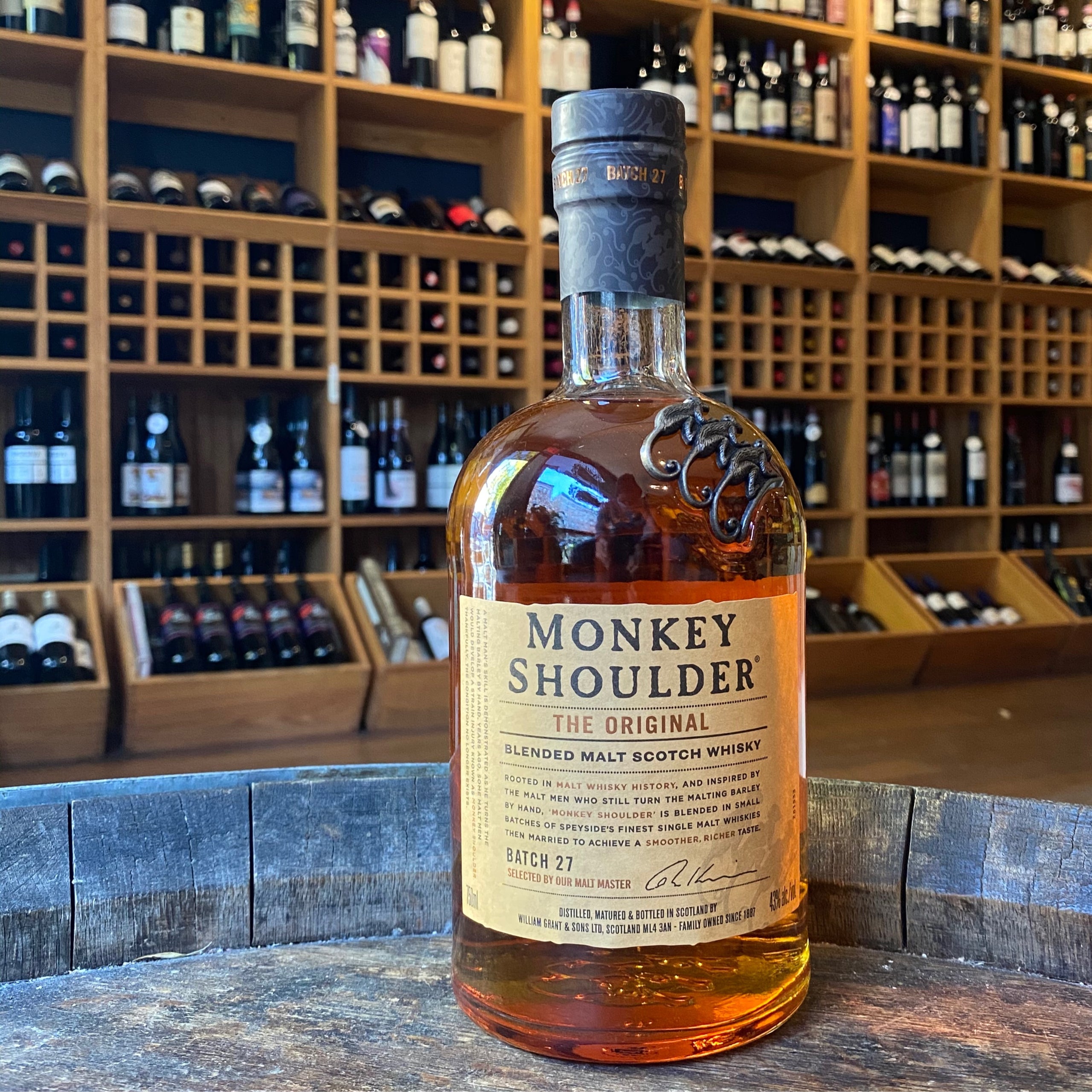
Blended malt Scotch whisky, previously known as “pure malt” or “vatted malt,” is a blend of single malts from two or more distilleries. This blending creates a complex and balanced flavor profile.
- Production: Blend of malt whiskies from different distilleries.
- Ingredients: 100% barley malt, distilled in copper pot stills.
Innovation Potential:
- Blended malt Scotch allows for creative blending of flavors from various distilleries.
- There is no limit to the number of whiskies that can be blended.
Notable Blended Malts:
- Monkey Shoulder
- Johnnie Walker Green Label
Single Grain Scotch
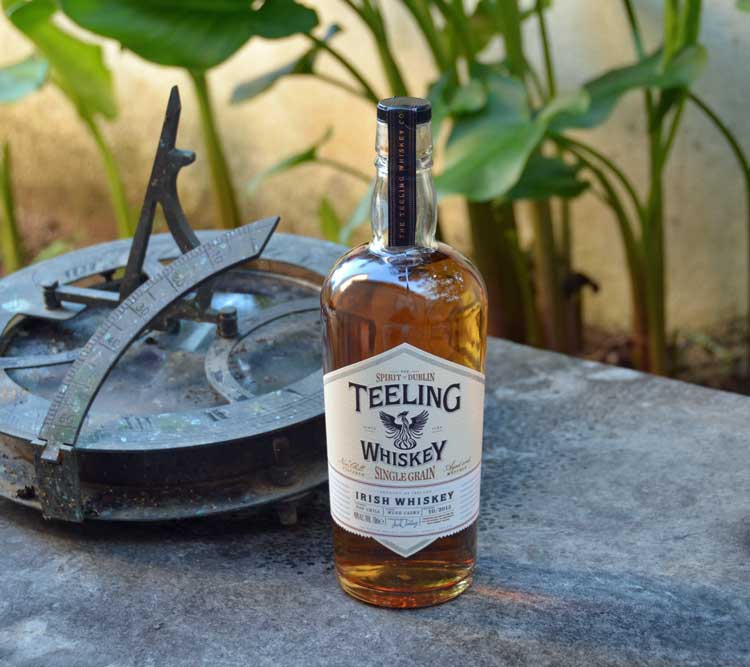
Despite the name, single grain Scotch whisky is made from various grains (including malted barley) at a single distillery. It is generally lighter and mellower than malt whisky, making it a great base for blends.
- Production: Made at one distillery.
- Ingredients: Can include grains other than malted barley, such as wheat or corn.
- Distillation: Distilled in column stills, not copper pot stills.
Characteristics:
- Often lighter in flavor.
- Typically used in blends but also bottled as-is by some distillers.
Uses:
Commonly used in Scotch-based cocktails like the Blood and Sand.
Popular Brands
- Teeling
- Cameron Brig
- Haig Club
Blended Grain Scotch
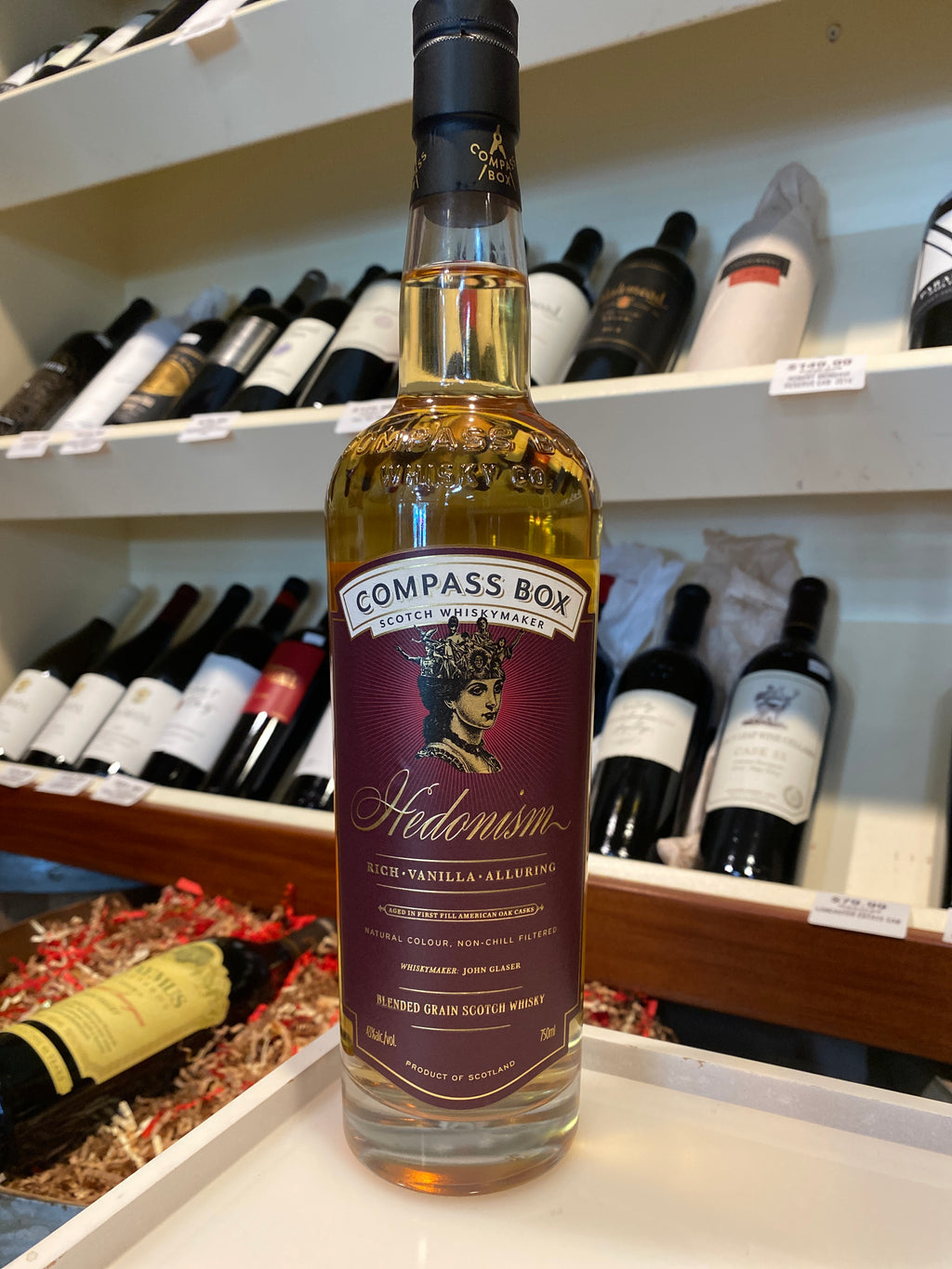
Blended grain Scotch whisky is a mix of single grain whiskies from different distilleries. It offers a smooth and well-rounded flavor profile, appealing to those who enjoy a harmonious blend.
- Production: Blend of single grain whiskies from various distilleries.
- Ingredients: Can include various grains, both malted and unmalted.
Flavor Profile:
- Mild and mellow.
- Allows the flavors of different grains to come through.
Popular Brands
Compass Box Hedonism
Blended Scotch

Blended Scotch whisky is the most common type, made by blending one or more single malts with one or more single grains. This allows master blenders to create a consistent product that balances the strengths of its various components.
- Production: Blend of one or more single malt whiskies with one or more single grain whiskies.
- Ingredients: Can include a mix of malted barley and other grains.
Popularity:
- Makes up about 90% of the Scotch whisky market.
- Often the first introduction to Scotch for many drinkers.
Notable Blends:
- Johnnie Walker Blue Label (high-end blend)
- Chivas Regal
- Dewar’s
How to Taste and Appreciate Scotch Whisky?

Drinking Scotch is an art that involves engaging all the senses. Here’s how to fully appreciate its depth and complexity:
Selecting the Right Glassware
A tulip-shaped glass, such as a Glencairn, is preferred as it concentrates the whisky’s aroma, allowing you to fully appreciate its bouquet.
Pouring and Observing
Pour a small amount into your glass, swirl it gently, and observe its color. A deeper hue suggests longer maturation or the use of sherry casks, while a lighter color may indicate less time in the barrel or aging in ex-bourbon casks.
The Nose: Smelling the Scotch
Bring the glass to your nose and inhale deeply. Note the layers of aroma—is it sweet, fruity, smoky, or earthy?
The Palate: Tasting the Scotch
Take a small sip and let it wash over your tongue. Compare the taste to the nose and identify any additional nuances.
The Finish: The Aftertaste
Consider the aftertaste or ‘finish’. A good Scotch will leave a lingering, often complex taste.
Pairing Scotch with Food
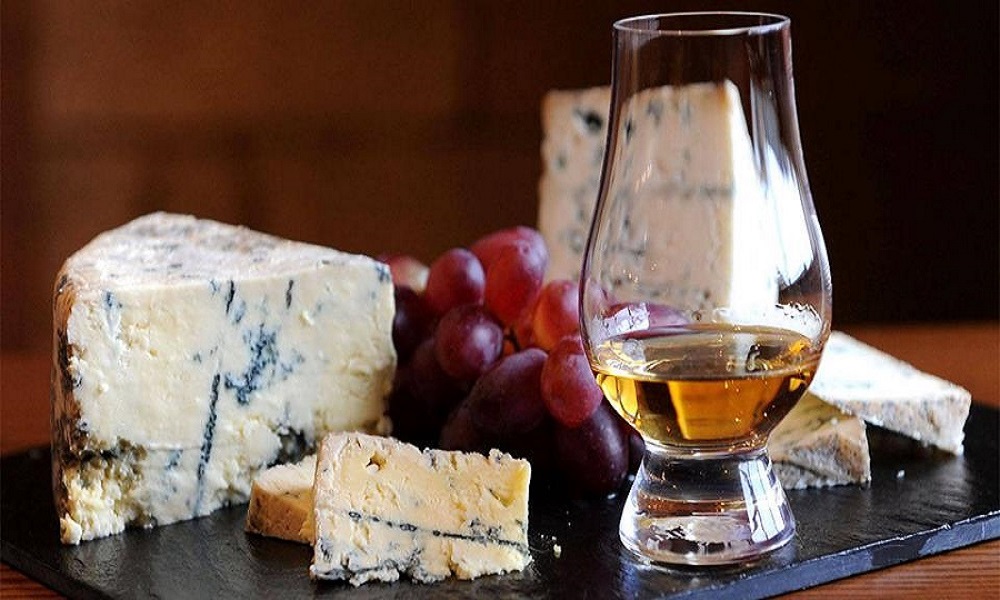
Like wine, Scotch can be paired with food to enhance both the whisky and the dish.
Scotch and Cheese
The contrast of strong, creamy cheese with a fiery sip of Scotch can be delightful. Strong blue cheeses or mature cheddars pair well with bold, smoky Scotch whiskies, while softer, milder cheeses match light, sweet Scotch.
Scotch and Chocolate
Dark chocolate and Scotch share a complexity that makes them perfect partners. The bitterness of the chocolate can enhance the fruity and spicy notes of Scotch.
Scotch and Meat
Hearty meat dishes, especially smoked or grilled, pair well with Scotch. The charred flavors complement the peaty, smoky notes of a robust Scotch. Lighter Scotch pairs well with chicken or pork dishes.
Scotch and Seafood
Smoky, peaty Scotch from Islay pairs brilliantly with fresh oysters, while salmon gravlax can beautifully accompany a mellow Speyside whisky.
Expert Insights
To gain deeper insights into Scotch whisky, we reached out to David Allardice, a U.S. Ambassador for Glenfiddich. Here are some key takeaways from his expertise:
- Single Malt Misconceptions: Many people misunderstand the term “single malt,” thinking it refers to a single barrel rather than a single distillery.
- Blended Whisky Innovation: Blended malt and blended grain whiskies offer significant room for creativity and innovation in flavor profiles.
- Regional Characteristics: While regions have general flavor profiles, individual distilleries within those regions can produce a wide range of flavors.
Conclusion
Scotch whisky is a captivating spirit with a rich history and a wide array of flavors. By understanding the different types of Scotch and how to appreciate them, you can enhance your whisky-drinking experience. So, pour yourself a wee dram, sit back, and enjoy the symphony of flavors in your glass. Slàinte mhath! (Good health!)
I’m Chen Mina, from Vol de Nuit, who has a special passion for bartending, especially mixing wine, beer, and cooktail. Here you will find content about alcoholic beverages, I will bring you knowledge that few people know about this drink.

